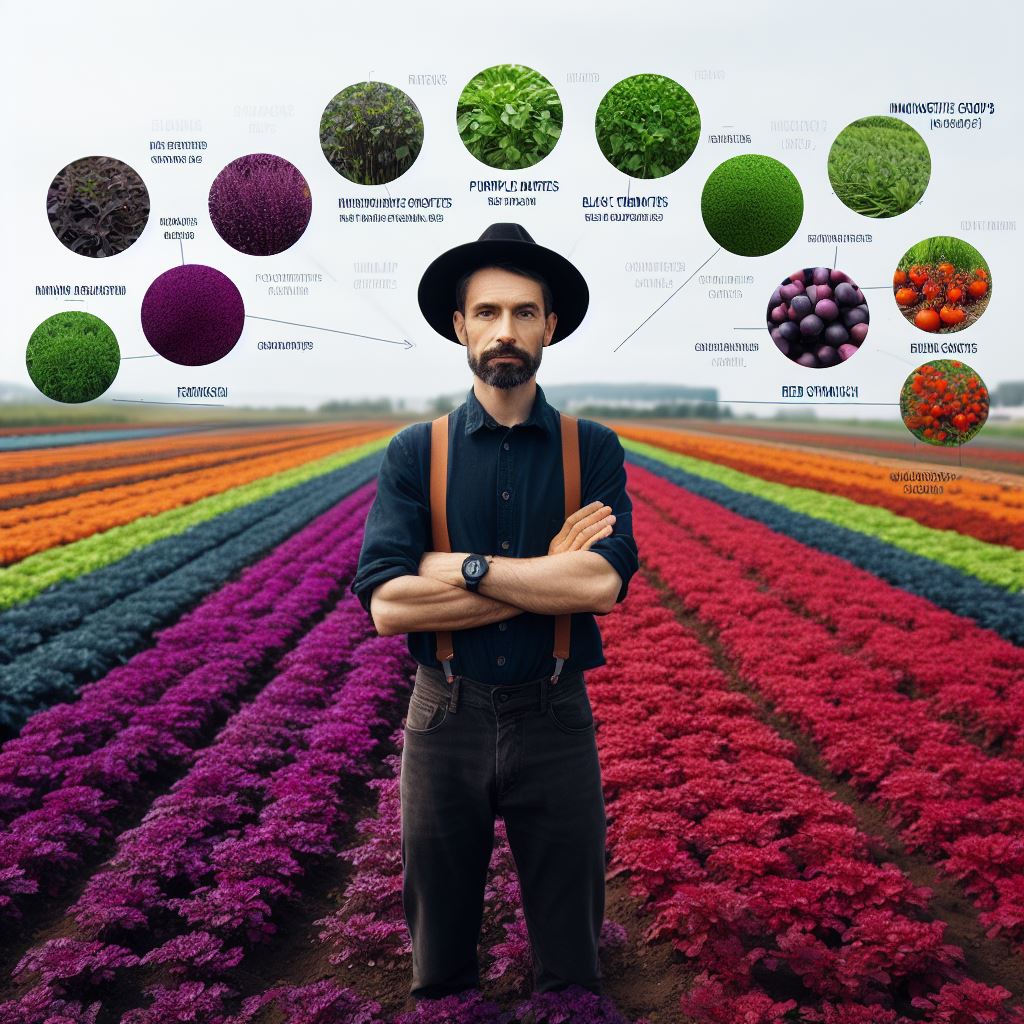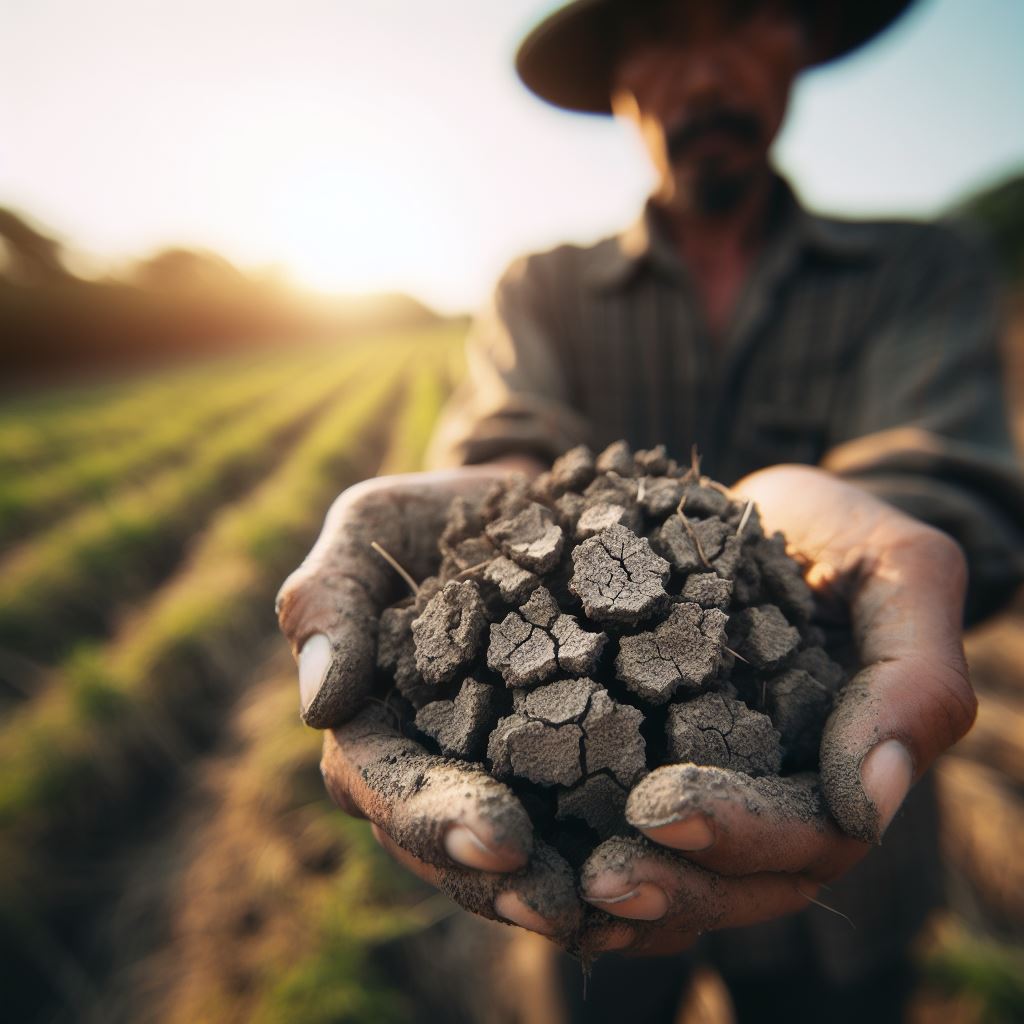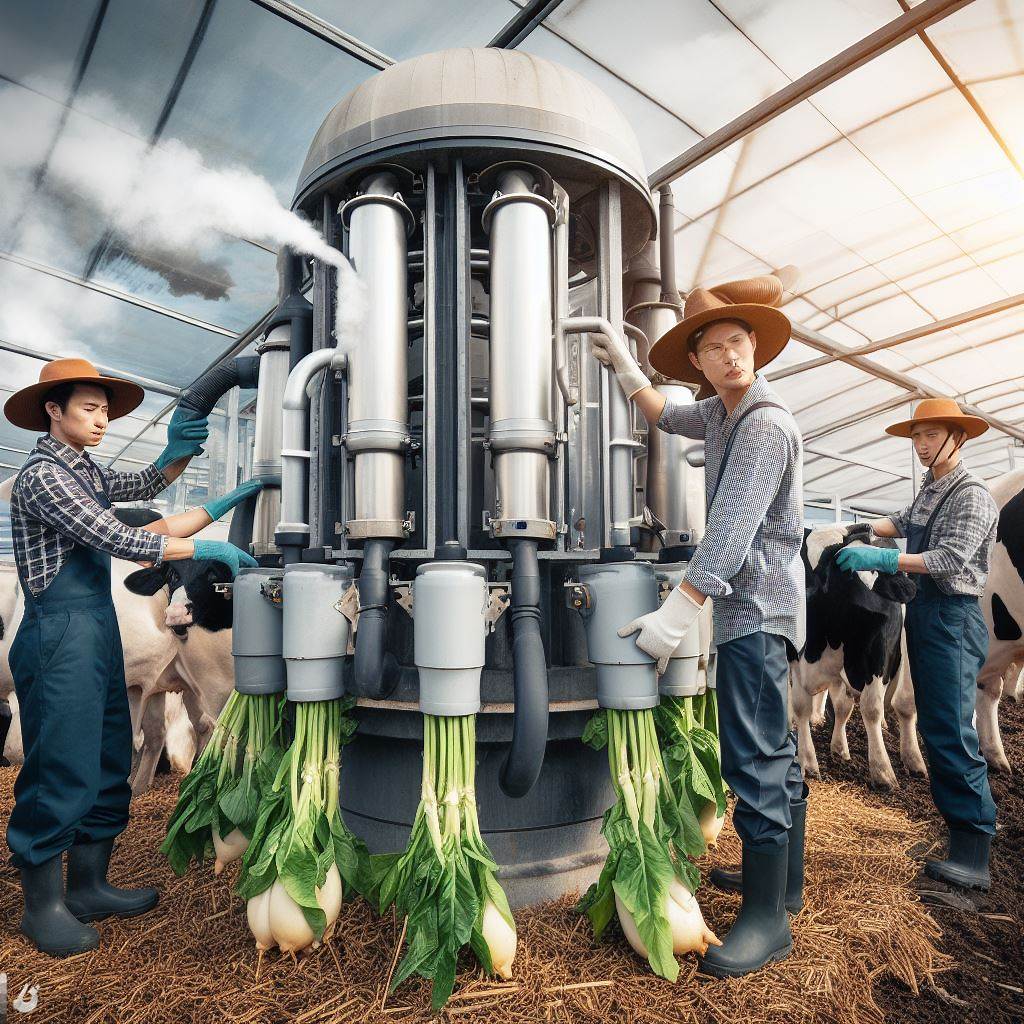Introduction
Rising Temps Crops Struggle and Adapt refer to the increase in the average temperature of the earth’s atmosphere.
Understanding how crops struggle and adapt to these rising temperatures is crucial for agricultural productivity and food security.
Definition of rising temperatures
Rising Temps Crops Struggle and Adapt this is because of steady increase in the average temperature of the Earth’s atmosphere due to human activities, such as greenhouse gas emissions.
Importance of understanding how crops struggle and adapt to rising temperatures
It is essential to comprehend how crops respond to rising temperatures as it directly affects global food production.
Rising temperatures can lead to heat stress, reduced crop yields, and altered geographical patterns for cultivation.
Hence, understanding how crops struggle and adapt becomes vital for ensuring food security in the face of climate change.
Crop plants have certain temperature thresholds beyond which they struggle to survive and perform optimally.
Excessive heat can cause physiological damage, reduce photosynthesis, and increase water stress in crops.
Some crops, like corn and wheat, have shown a limited ability to adapt to warmer temperatures through genetic variability and natural selection.
However, the rate of temperature increase might surpass their adaptive capacity, leading to reduced crop yields and economic losses.
Agricultural practices, such as using heat-tolerant crop varieties, improved irrigation methods, and adjusting planting dates, can help crops cope better with rising temperatures.
However, these adaptations might require significant investments and changes in farming techniques.
Furthermore, rising temperatures also impact pest and disease dynamics, altering crop protection strategies and necessitating the development of new pest-resistant crop varieties.
In short, rising temperatures have significant implications for crop production.
Understanding how crops struggle and adapt to these changing conditions is vital for ensuring food security in a rapidly warming world.
Transform Your Agribusiness
Unlock your farm's potential with expert advice tailored to your needs. Get actionable steps that drive real results.
Get StartedImplementing sustainable agricultural practices and investing in research and development are key to mitigating the negative effects of rising temperatures on crop productivity.
Background on Rising Temperatures and Agriculture
Rising temperatures have become a pressing concern for agricultural systems across the globe.
The increase in average temperatures is primarily attributed to climate change and greenhouse gas emissions.
This ongoing trend poses significant challenges for crop productivity, ultimately affecting food security and the global economy.
Impact of Rising Temperatures on Crop Productivity
Rising temperatures directly and indirectly impact crop productivity in multiple ways.
Firstly, extreme heat disrupts the overall growth and development of plants.
It can reduce photosynthesis, inhibit pollination, and even cause wilting or plant death.
Additionally, increased temperatures can alter the timing of plant maturity and affect the synchronization of farming practices, such as planting and harvesting.
Effects on Yield, Quality, and Nutritional Value
As temperatures continue to rise, crop yield is expected to decline significantly.
Higher temperatures can result in lower yields due to reduced crop growth and increased water stress.
Heat stress can also impact crop quality by affecting the nutritional value, taste, and appearance of the harvested produce.
This poses a serious threat to the overall availability of nutritious food for the global population.
Examples of Crops Affected by Rising Temperatures
Several major crops have already experienced the negative effects of rising temperatures.
Wheat, a staple food in many countries, is particularly sensitive to heat stress during its flowering stage.
Higher temperatures can lead to poor grain development and reduced yields.
Maize, another essential cereal crop, is also vulnerable to heat stress, affecting both its growth and reproductive processes.
Additionally, fruit crops such as apples, grapes, and citrus fruits can be adversely affected by rising temperatures, leading to lower quality and reduced yields.
Adapting to Rising Temperatures
To mitigate the impact of rising temperatures, innovative strategies and technologies are being developed.
These include breeding heat-tolerant crop varieties, improving irrigation systems, and adopting precision farming techniques.
Crop rotation and agroforestry practices can also help mitigate the effects of high temperatures.
Furthermore, policymakers and governments should prioritize climate change mitigation efforts and provide support to farmers in implementing sustainable agricultural practices.
Rising temperatures pose a significant challenge to global agriculture and food security.
The negative impacts on crop productivity, yield, quality, and nutritional value are evident.
It is crucial for scientists, farmers, and policymakers to collaborate and implement adaptive measures to ensure the resilience of agricultural systems in the face of climate change.
Showcase Your Farming Business
Publish your professional farming services profile on our blog for a one-time fee of $200 and reach a dedicated audience of farmers and agribusiness owners.
Publish Your ProfileBy prioritizing sustainable practices and investing in research and development, we can strive towards a future where crops can adapt and thrive despite rising temperatures.
Read: Container Gardening: Ideal for Small Areas
Struggles faced by crops in rising temperatures
As global temperatures continue to rise, crops face numerous challenges in adapting to the changing climate.
These struggles directly impact crop yield and agricultural productivity.
In this blog section, we will explore some of the major issues faced by crops in rising temperatures.
Increased water stress and drought
- The rising temperatures lead to increased evaporation, causing water stress for crops.
- Drought conditions become more frequent and severe, negatively impacting crop growth.
- Crops require a sufficient water supply for optimal photosynthesis and nutrient uptake.
Effect on photosynthesis and growth
- Elevated temperatures can disrupt the delicate balance of photosynthesis in crops.
- Heat stress decreases enzyme activity, limiting the conversion of carbon dioxide into glucose.
- Reduced photosynthesis hampers overall plant growth and lowers crop productivity.
Damaging effects of extreme heat events
- Extreme heat events, such as heatwaves, can have devastating consequences for crops.
- High temperatures accelerate crop maturity, reducing the time available for growth.
- Excessive heat causes damage to plant tissues, leading to reduced yield and quality.
Decreased pollination and fertility
- Rising temperatures affect the pollination process, impacting crop reproduction.
- Heat stress impairs the viability and quality of pollen, leading to decreased fertilization.
- Poor pollination results in lower fruit set and reduced crop yields.
In essence, rising temperatures pose significant challenges for crops and agriculture in general.
Increased water stress, drought conditions, disrupted photosynthesis, and the damaging effects of extreme heat events all contribute to reduced crop yield and productivity.
Additionally, decreased pollination and fertility further impact crop reproduction.
It is crucial for farmers and researchers to develop adaptive strategies to mitigate these challenges and ensure food security in a changing climate.
Read: Gardening Tools: Must-Haves for Beginners

Adaptation strategies employed by crops
Changes in flowering and maturation process
Crops adjust their reproductive processes, such as flowering and maturation, according to rising temperatures.
Modifications in leaf structure and stomatal behavior
Leaves may become thicker with a reduced number of stomata to minimize water loss and maintain optimal temperatures.
Evolutionary adaptations in response to rising temperatures
Over time, crops have developed genetic variations that allow them to tolerate and thrive in higher temperatures.
Genetic engineering and breeding efforts
Scientists utilize genetic engineering and breeding techniques to develop heat-tolerant crop varieties.
These strategies aim to enhance the crop’s ability to withstand and adapt to increased temperatures.
Intraspecific and interspecific hybridization:
Crossbreeding between related crops can result in hybrid varieties that exhibit improved heat tolerance.
Enhancing heat stress response mechanisms
Crops are being bred to activate specific genes that enhance their tolerance to high temperatures.
Enhancing photosynthetic efficiency
Genetic modifications aim to improve the crop’s photosynthetic activity, even under elevated temperatures.
Improving water use efficiency
Efforts are made to develop crops with reduced water requirements and increased drought tolerance.
Integrated pest management
Pest control measures are implemented to minimize crop damage, which can be exacerbated by rising temperatures.
Utilizing shade structures and mulching
These methods help to regulate temperature and minimize evaporation, ensuring better crop performance.
Altering cultivation practices
Farmers adapt by adjusting planting times, irrigation methods, and adopting protected cultivation techniques.
Crop diversification
Growing a variety of crops increases resilience and reduces the risk of total crop failure due to extreme temperatures.
Biological control of pests and diseases
Natural enemies of pests and diseases are employed to maintain crop health and reduce the need for chemical pesticides.
Utilizing precision farming techniques
Technology, such as sensors and drones, is used to monitor crop health and optimize resource management.
Education and awareness
Raising awareness about the impacts of rising temperatures and educating farmers on adaptation strategies is crucial.
By implementing these adaptation strategies, crops can continue to thrive and provide food security despite climate challenges.
Read: Sustainable Practices for Small Farms
Innovative agricultural practices to mitigate rising temperature impacts
Rising temperatures pose significant challenges to crop production worldwide.
However, innovative agricultural practices can help mitigate these impacts and ensure food security.
Here are some key strategies:
- Improving irrigation and water management techniques: Water is crucial for crop growth, and efficient irrigation systems can optimize water usage.
Techniques such as drip irrigation and precision irrigation help deliver water directly to plants’ roots, reducing wastage. - Implementing shade and cooling mechanisms: High temperatures can hinder crop growth and productivity.
Implementing shade structures, using shade nets, or installing misting systems can provide relief and reduce heat stress on plants. - Utilizing precision agriculture technologies: Precision agriculture integrates data and technology to optimize farm management.
Tools like remote sensing, drones, and GPS can help monitor and manage crop health, water usage, and nutrient application efficiently. - Incorporating climate-smart strategies and sustainable practices: Climate-smart agriculture focuses on increasing resilience to climate change while ensuring sustainable food production.
Practices like crop rotation, cover cropping, agroforestry, and organic farming enhance soil health and reduce greenhouse gas emissions.
Adapting to rising temperatures demands improved irrigation techniques.
Efficient systems optimize scarce water resources, countering water stress from increased evaporation.
Vital shade and cooling mechanisms combat higher temperatures.
In excessively hot areas, erect shading structures like shade cloth to reduce direct sunlight exposure and prevent crop damage.
Precision agriculture technologies revolutionize farming under challenging climates.
Farmers employ satellite imagery and drones for real-time crop health data, identifying outbreaks and applying targeted treatments.
Climate-smart strategies and sustainable practices are crucial for long-term adaptation.
Crop rotation breaks pest cycles, conserves soil moisture, and improves nutrient availability.
Cover cropping reduces soil erosion and enhances fertility, while agroforestry provides diverse benefits.
Showcase Your Farming Business
Publish your professional farming services profile on our blog for a one-time fee of $200 and reach a dedicated audience of farmers and agribusiness owners.
Publish Your ProfileIntegrating organic farming eliminates synthetic inputs, fostering an environmentally friendly approach and mitigating climate change by sequestering carbon in the soil.
These practices enhance farming system resilience, improve resource efficiency, and contribute to long-term sustainability.
Read: Beekeeping: Boosting Your Garden’s Health
Gain More Insights: Flood-Proof Farms: Stories of Innovative Adaptation
You Might Also Like: Agri-Tech in Climate Crisis Battle
Examples of successful adaptation and resilience
One example of successful adaptation is the development of crop varieties specifically tailored to different regions.
Scientists and farmers have worked together to create new crop varieties that can withstand rising temperatures.
These adapted crops are able to thrive in the changing climate and continue to produce abundant yields.
For instance, in drought-prone regions, scientists have developed crop varieties that require less water for growth.
This allows farmers to continue cultivating crops even during periods of low rainfall.
In addition to crop varieties, resilient farming techniques have also emerged to combat the challenges posed by rising temperatures.
One such technique is the use of precision agriculture, where farmers employ advanced technology to monitor and optimize crop growth.
By using data-driven approaches, farmers are able to make informed decisions about irrigation, fertilizer application, and pest control.
These techniques help maximize crop resilience, reduce water waste, and increase overall productivity.
Case studies of crop varieties developed for specific regions
- In Australia, a heat-tolerant wheat variety called “Aussie Gold” was developed to withstand extremely high temperatures.
- This variety has revolutionized wheat farming in the country, allowing farmers to continue production in heat-stressed areas.
- In India, a flood-tolerant rice variety called “Swarna-Sub1” was developed to withstand prolonged periods of waterlogging.
- This variety has been a game-changer for farmers in flood-prone regions, ensuring stable rice yields despite heavy rainfall.
Resilient farming techniques employed in different parts of the world
- In the Netherlands, farmers have implemented climate-smart agricultural practices to adapt to rising temperatures.
- They utilize precision irrigation systems, crop rotation, and cover crops to optimize water usage and maintain soil health.
- In the United States, many farmers have adopted conservation tillage practices to mitigate the effects of heat stress on crops.
- Conservation tillage involves leaving crop residues on the soil surface to reduce evaporation and conserve soil moisture.
Adoption of heat-tolerant crops in areas prone to high temperatures
- In regions such as the Middle East, where high temperatures are common, farmers have started growing heat-tolerant crops like millet and sorghum.
- These crops have adapted to withstand the intense heat and require less water compared to traditional crops like wheat or corn.
- The adoption of heat-tolerant crops provides farmers with a sustainable option to cope with rising temperatures.
- Furthermore, it reduces the need for expensive water irrigation and ensures food security in these challenging climates.
The challenges posed by rising temperatures have spurred the development of crop varieties, resilient farming techniques, and the adoption of heat-tolerant crops.
These examples of successful adaptation and resilience showcase our ability to innovate and overcome the obstacles presented by climate change.
By continuing to prioritize research and collaboration, we can ensure food security and sustainable agriculture in the face of a changing climate.
Conclusion
Rising temperatures pose significant challenges to crops worldwide.
The increased heat stress and reduced water availability affect crop productivity and threaten food security.
To address these challenges, further research is essential to understand the specific impacts of rising temperatures on different crop types and regions.
This research will enable scientists and policymakers to develop effective strategies for adaptation and mitigation.
Global cooperation is crucial in sharing knowledge, resources, and technology to address the impacts of rising temperatures on crops.
Collaboration between countries can lead to innovative solutions for crop production in a changing climate.
Farmers play a critical role in adapting to rising temperatures.
It is important for them to implement innovative strategies such as using drought-tolerant crop varieties, improving irrigation methods, and implementing precision agriculture techniques.
These actions can help mitigate the impacts of rising temperatures on crop yields.
Overall, addressing the challenges posed by rising temperatures requires a multi-faceted approach involving scientific research, global cooperation, and on-the-ground actions from farmers and agricultural practitioners.
By implementing adaptation strategies and embracing technological advancements, we can ensure the resilience and sustainability of crop production in the face of climate change.




